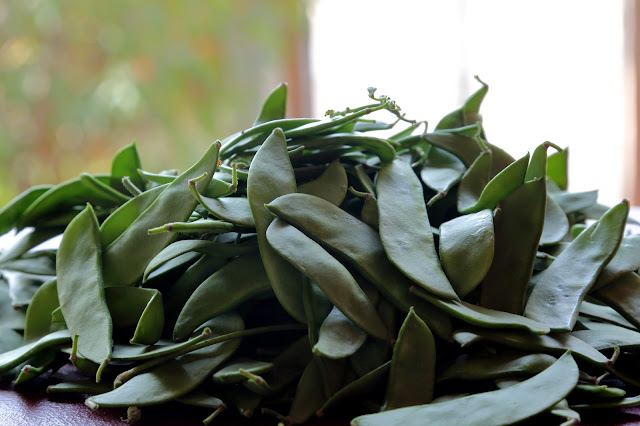A question that we are frequently asked is, “Can long fermentation of wheat remove gluten and thereby make wheat bread safe?” The answer - Practically no, theoretically yes and remember, theoretically one can even build a time machine!
So, why then on a practical basis, in a home kitchen, fermentation is unable to remove gluten and how is it done in a laboratory?
A) Structure: Gluten is critical in bread making because it provides bread with strength, structure and spring
(1). Without gluten, a bread does not have strength to hold itself or to create those holes, that are so much a part of most bread loaves that we eat. One of the reason, bakers put in a lot of effort kneading the dough and/or allow the dough to rest for long periods of time is to develop the gluten, which then makes the bread soft. Now imagine, that by some magic this gluten was to disappear - A wheat bread then will have no strength, texture or spring that is associated with it - neither will it be soft. The question one needs to reflect on is - if I want a bread without gluten why do I not use so many gluten free flours that are easily available?
B) The fermenters: Two of the most commonly used microbes for fermentation are Yeast and Lactic acid bacteria. Leavening that is done with commercial yeast generally uses
Saccharomyces cerevisiae, while natural fermentation relies on a combination of many species of both, Lactic acid bacteria and Yeast. Irrespective of what method is used, these microbes feed on carbohydrates like sugars and starches during the fermentation process. Gluten is a protein - not a carbohydrate, so can these microbes then degrade it? Yeast cannot break down proteins or fats and, requires only carbohydrates
(2).
Bacteria, however, are more versatile and can survive on a large variety of food. So, can Lactic acid bacteria break down gluten? In a study, conducted in 2006, 42 Lactic acid bacteria were studied for their ability to breakdown gluten - only 13 of them could do so!
(3). Scientists who experimented on wheat mixtures to reduce gluten in them used only these specific strains of Lactic acid bacteria and not just any culture. Moreover, none of these 13 Lactic acid bacteria were able to completely degrade gluten, even after 24 hours of fermentation (They require a much longer time). Lactic acid bacteria too, prefer carbohydrates over protein and keep utilising carbohydrates as their primary source of energy.
C) Bacteria need to move around a bread dough in order to break down every gluten molecule. However, that can only happen if the batter is near fluid, and is regularly stirred. Bread dough is rarely of such a texture.
So, how do scientists who remove gluten from wheat by fermentation do it? The following is one such recipe from a laboratory
(4). This is what these Scientists call as the ‘’Sourdough method’’. This technique and its variations are used in all laboratories when dealing with gluten degradation.
1. To 80-gram wheat flour, add 320 grams of water (Reason C)
2. Use the following strains of bacteria as starters; Lactobacillus alimentarius 15M, L. brevis 14G, L. higardii 51B and a bunch of other specific strains only (Check the report for the complete list (4)). (Reason B)
3. Use fungal proteases, Aspergillus oryzae and A. niger to aid the Lactic acid bacteria.
4. Ferment this for 48 hours at 37c (reason B). During Fermentation, stir it continuously at 200 rpm (for this, one will need to use a machine) (Reason C)
5. Since this is a very liquid batter, not suitable to make bread - use a spray drier to dry this mass. The dry flour thus obtained will hopefully be free of gluten. (Test it)
6. To 125 grams of this spray-dried wheat, add 100 ml of water (with 1.5% Baker’s yeast), 6% cornstarch, and 3% Xanthan gum (Reason A). Xanthan gum is used to substitute for gluten in the bread.
7. Ferment it for 2 hours and bake it for 15 mins at 250c.
Viola! Gluten free ‘’Sourdough bread’ made using wheat is ready!
As you may have noticed, this technique is a far cry from what we employ in a kitchen or a bakery. B However, unknowingly, many bakers continue capitalizing on this myth - without realising that the method used was very different from what is commonly known as Sourdough methods to us. In US, some bakers, are openly selling sourdough bread, claiming it to be safe for the gluten intolerant based on this false premise.
(5)
There is evidence emerging that such sourdough bread can be more harmful than quickly fermented bread for a celiac (6). When gluten is partly broken down during long fermentation, more binding sites are made available for an enzyme called TG2. It is this TG2, that plays a crucial role in the initiation of Celiac disease!
Sadly, in today’s age, scientific studies are extrapolated and stretched by tabloids that provide us our dietary advice - does anyone even read beyond the headline? (https://www.youtube.com/watch?v=0Rnq1NpHdmw)
References:
1. The structure and properties of gluten: an elastic protein from wheat grain P. R. Shewry, N. G. Halford, P. S. Belton, A. S. Tatham http://rstb.royalsocietypublishing.org/content/357/1418/133
2. http://www.ift.org/~/media/Knowledge%20Center/Learn%20Food%20Science/Microbiology%20Experiments/TeacherGuideYeast.pdf
https://en.wikipedia.org/wiki/Fermentation
3. Gluten breakdown by lactobacilli and pediococci strains isolated from sourdough. http://onlinelibrary.wiley.com/doi/10.1111/j.1472-765X.2006.01889.x/full
4. https://www.ncbi.nlm.nih.gov/pmc/articles/PMC1932817/
5. https://www.glutenfreewatchdog.org/product/dan-the-baker-country-sour-bread-not-labeled-gf/333
https://www.glutenfreewatchdog.org/news/purbread-gluten-neutralized-bread-if-you-have-a-gluten-related-disorder-do-not-eat-this-bread/
6. http://www.mdpi.com/2072-6643/7/4/2134/htm







































